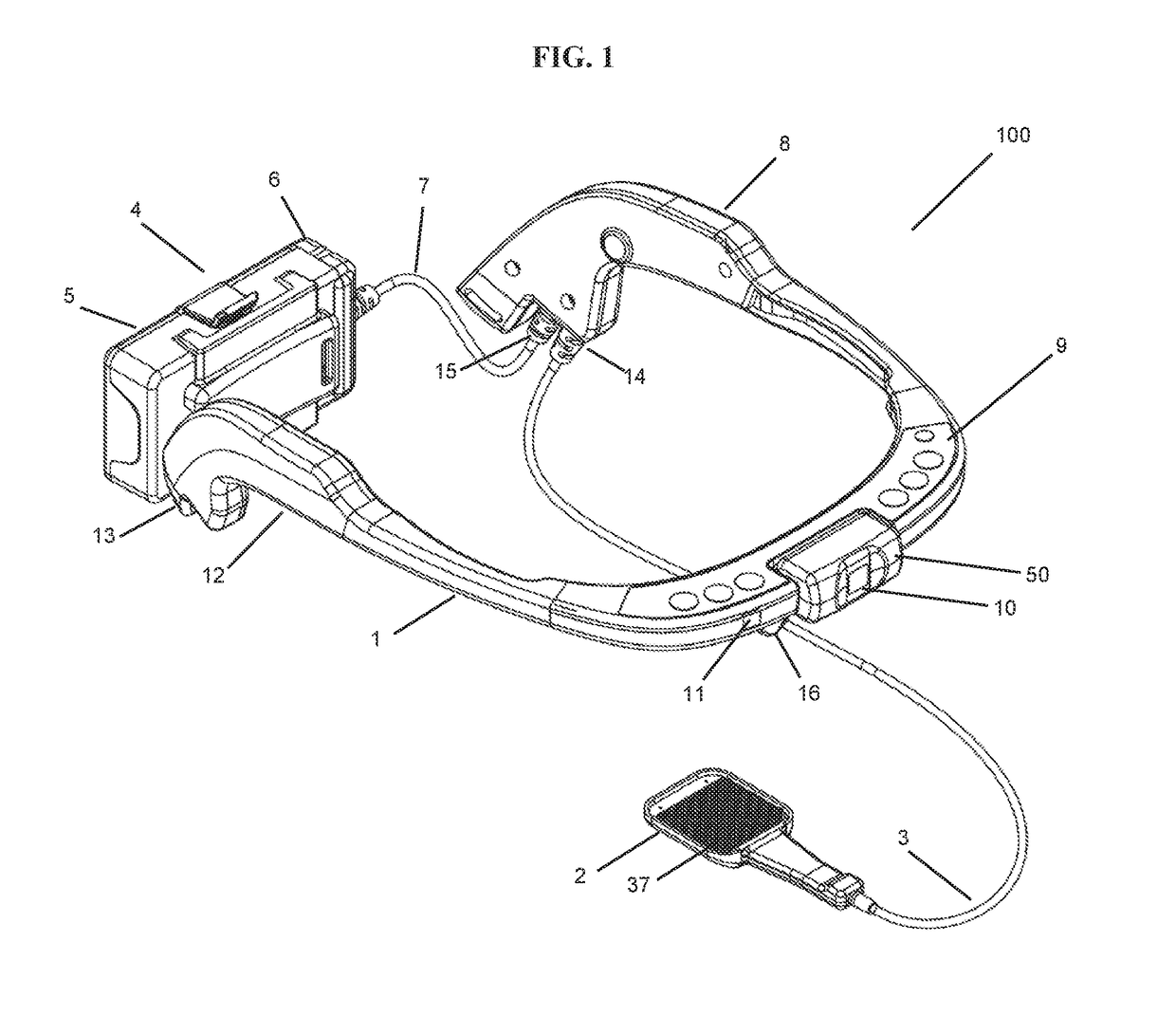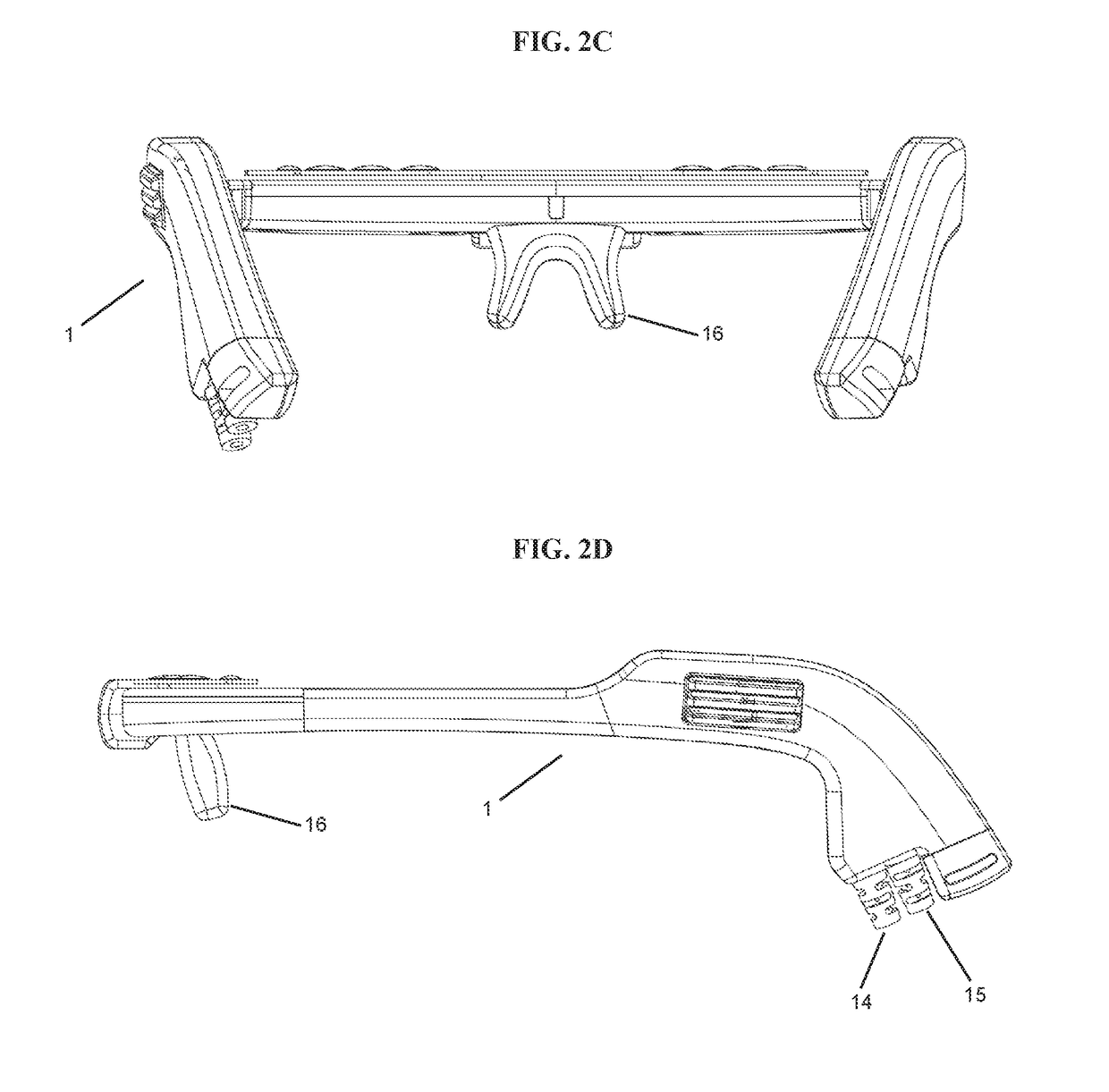Object detection, analysis, and alert system for use in providing visual information to the blind
a technology of visual information and object detection, applied in the field of providing visual information to visually impaired or blind people, can solve the problems of limiting the use of conventional mobility canes, providing little to no information to profoundly blind users regarding users, and only providing a very limited amount of information about the surrounding environmen
- Summary
- Abstract
- Description
- Claims
- Application Information
AI Technical Summary
Benefits of technology
Problems solved by technology
Method used
Image
Examples
Embodiment Construction
[0073]The present invention solves the problems in the prior art approaches by offering methods and apparatus that provide to a blind user the ability to scan her or his environment, both immediate and distant, to detect and identify landmarks (e.g., signs or other navigational cues) as well as the ability to see the environment via electrotactile stimulation of the user's tongue.
[0074]Accordingly, in one embodiment, the present invention relates generally to an apparatus and a method for providing visual information to a visually impaired or blind person. More specifically, the present invention relates to an apparatus (e.g., vision assistance device (VAD) 100, shown in FIGS. 1, 2H-2N, 6, and 7) and a method designed to provide a completely blind person the ability to detect and identify landmarks and to navigate within their surroundings. The apparatus includes a portable, closed-loop system of capture, analysis, and feedback that uses a headset 1 containing an unobtrusive camera ...
PUM
 Login to View More
Login to View More Abstract
Description
Claims
Application Information
 Login to View More
Login to View More - R&D
- Intellectual Property
- Life Sciences
- Materials
- Tech Scout
- Unparalleled Data Quality
- Higher Quality Content
- 60% Fewer Hallucinations
Browse by: Latest US Patents, China's latest patents, Technical Efficacy Thesaurus, Application Domain, Technology Topic, Popular Technical Reports.
© 2025 PatSnap. All rights reserved.Legal|Privacy policy|Modern Slavery Act Transparency Statement|Sitemap|About US| Contact US: help@patsnap.com



